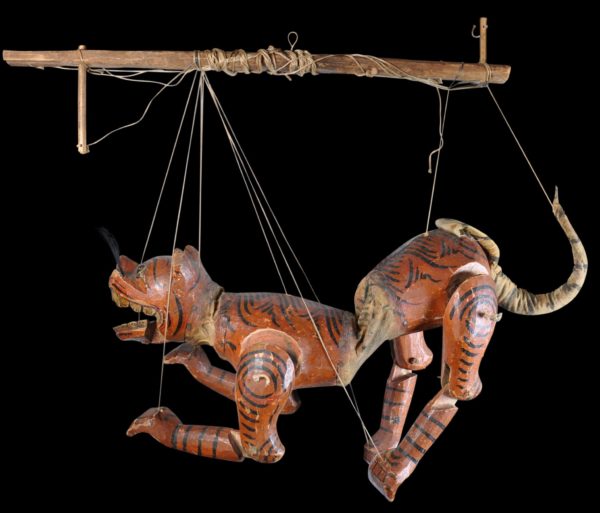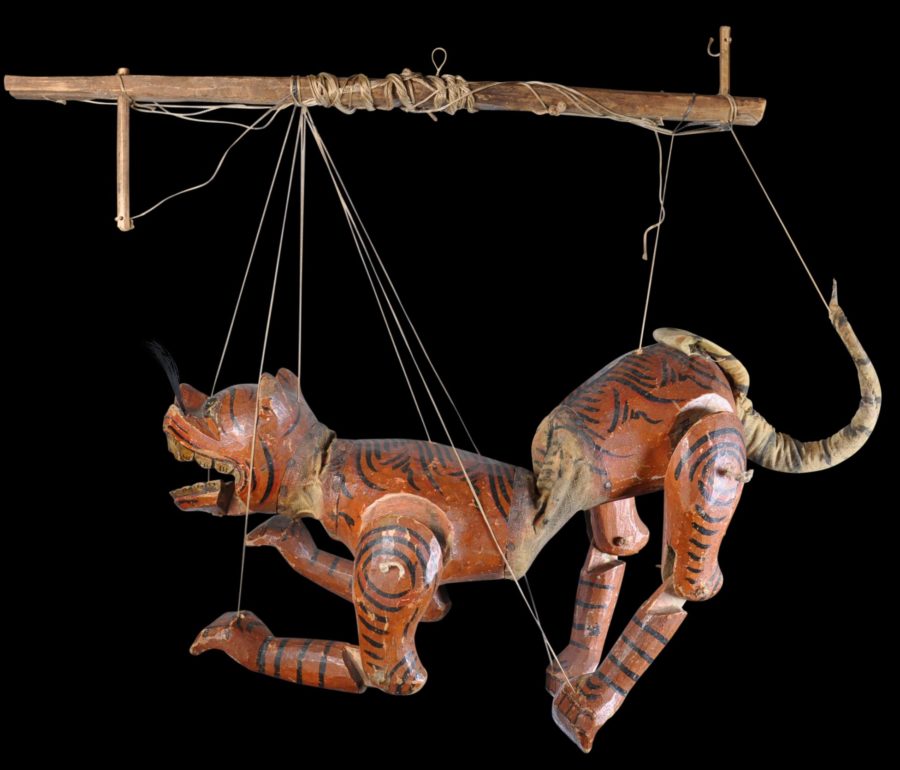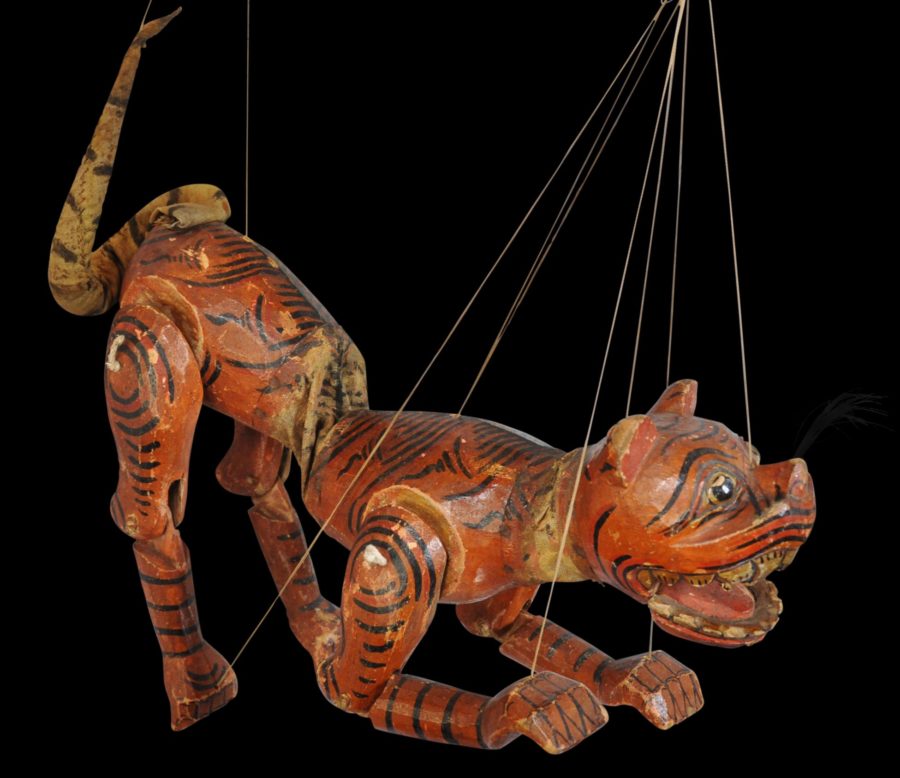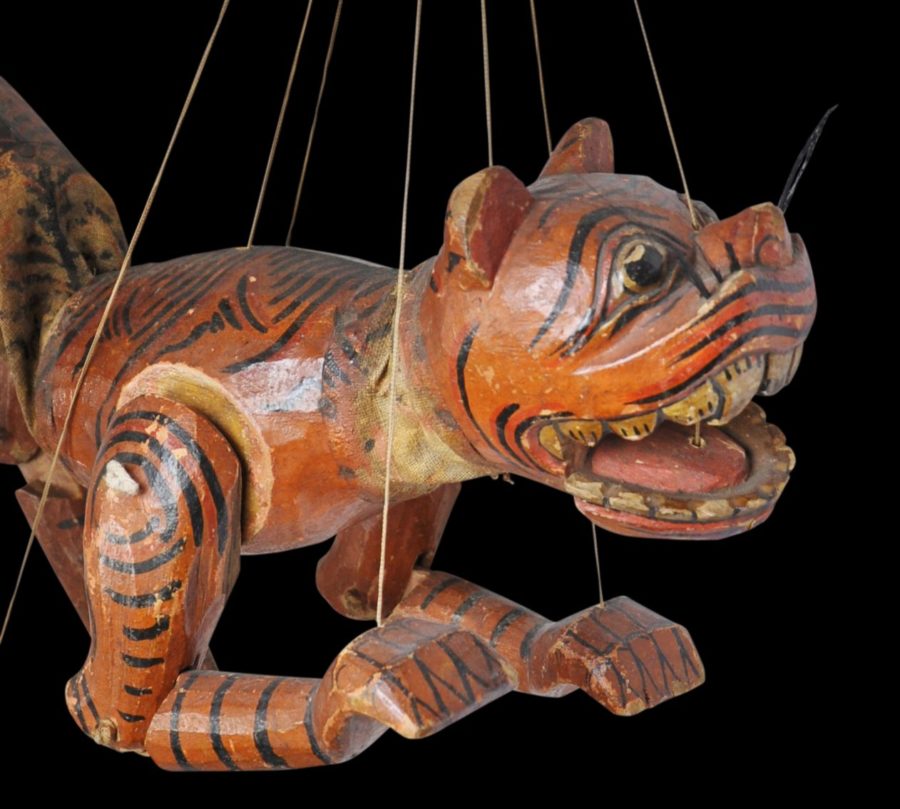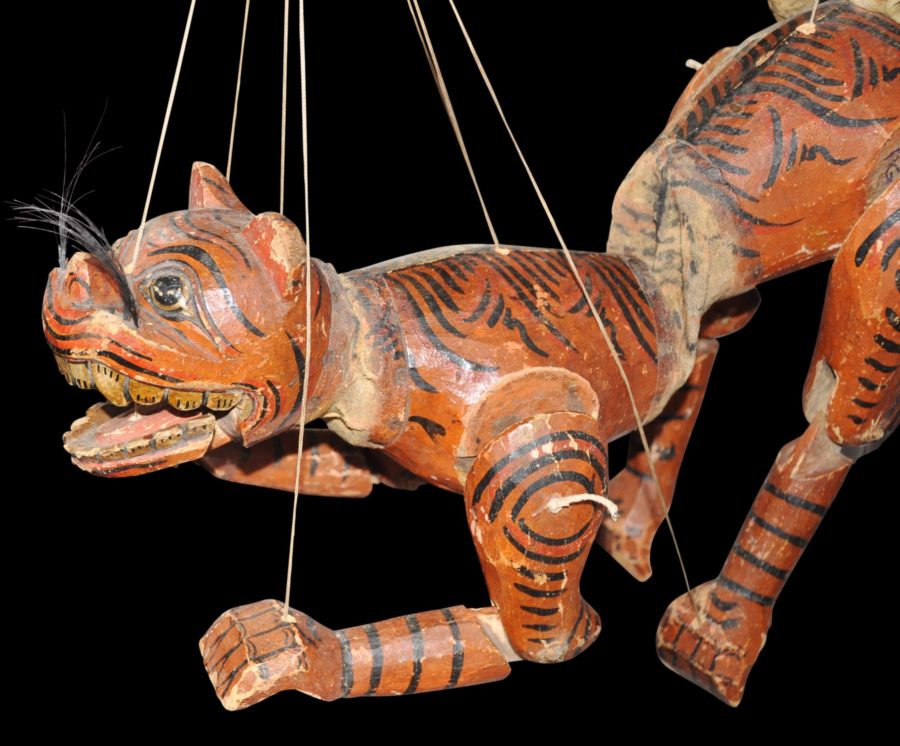Enquiry about object: 5216
Burmese Tiger (Kyar) Marionette Puppet (Yok-thei)
Burma 19th century
length: 50cm, width: 23cm
Provenance
from the puppet collection of the late John Blundall (1937-2014) of Glasgow, Scotland; and previously from the collection of the author & puppeteer H.W. Whanslaw (1883-1965).
This splendid Burmese stringed marionette (yok-thei) is of a striped tiger, (kyar). It has been carved from wood but with a cloth mid-section and tail. All has been painted with browns and reds. The tiger’s whiskers are of real hair. The tiger is very well carved and has a cheerful countenance! Its original strings (kyo) and wooden string holder (dalet) are present.
A tiger puppet was an integral character in all Burmese marionette troupes.
Designated puppet makers who made the complete character were responsible for the making of stringed marionettes (yok-thei) for theatrical performances known as yok-thei-pwe. Such performances were very popular in Burma in the 19th and early 20th centuries and were intended for adults. The performances drew upon the Jataka stories, Burmese history, fables and legends (Fraser-Lu, 1994, p. 98).
Plays were typically performed on a bamboo stage that was generally devoid of props, and they were accompanied by a Burmese orchestra. The precise number of puppets used varied from troupe to troupe but typically a set of marionettes included a king, four ministers, prince and princesses, a tiger, an elephant, a horse, an old woman, a hermit, and so on.
According to Fraser-Lu (1994, p. 98), an edict passed during the reign of King Ba-gyi-daw (1819-37) decreed that human, horse and nat puppets should be made of yamane wood (gmeline aborea) and that the other puppets should be carved from than-that wood (albizzia lucida).
The puppet is from the collection of the late John Blundall. Blundall was a world-renown puppeteer himself. He was part of the company that founded the television program the Thunderbirds. In 1968 he founded the Cannon Hill Puppet Theatre company, housed within the Midland Arts Centre in Birmingham, and, until 1992, was its artistic director, writing, designing and directing more than 50 productions. Blundall’s connections to the world of professional puppetry allowed him to amass a world-important collection of puppets.
In turn, Blundall acquired this puppet from the collection of British author, illustrator and puppeteer, H.W. Whanslaw (1883-1965). Whanslaw was the author of many books on puppetry and was a co-founder of the London Marionette Theatre.
The tiger puppet here has a superb patina and obvious age. A dating well into the 19th century given its provenance and judging by the patina is entirely reasonable. There are minor losses and wear to the paint, and the whiskers are depleted.
References
Fraser-Lu, S., Burmese Crafts: Past and Present, Oxford University Press, 1994.
Singer, N., Burmese Puppets, Oxford University Press, 1992.


